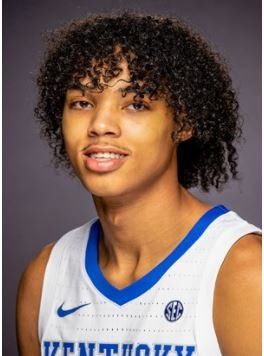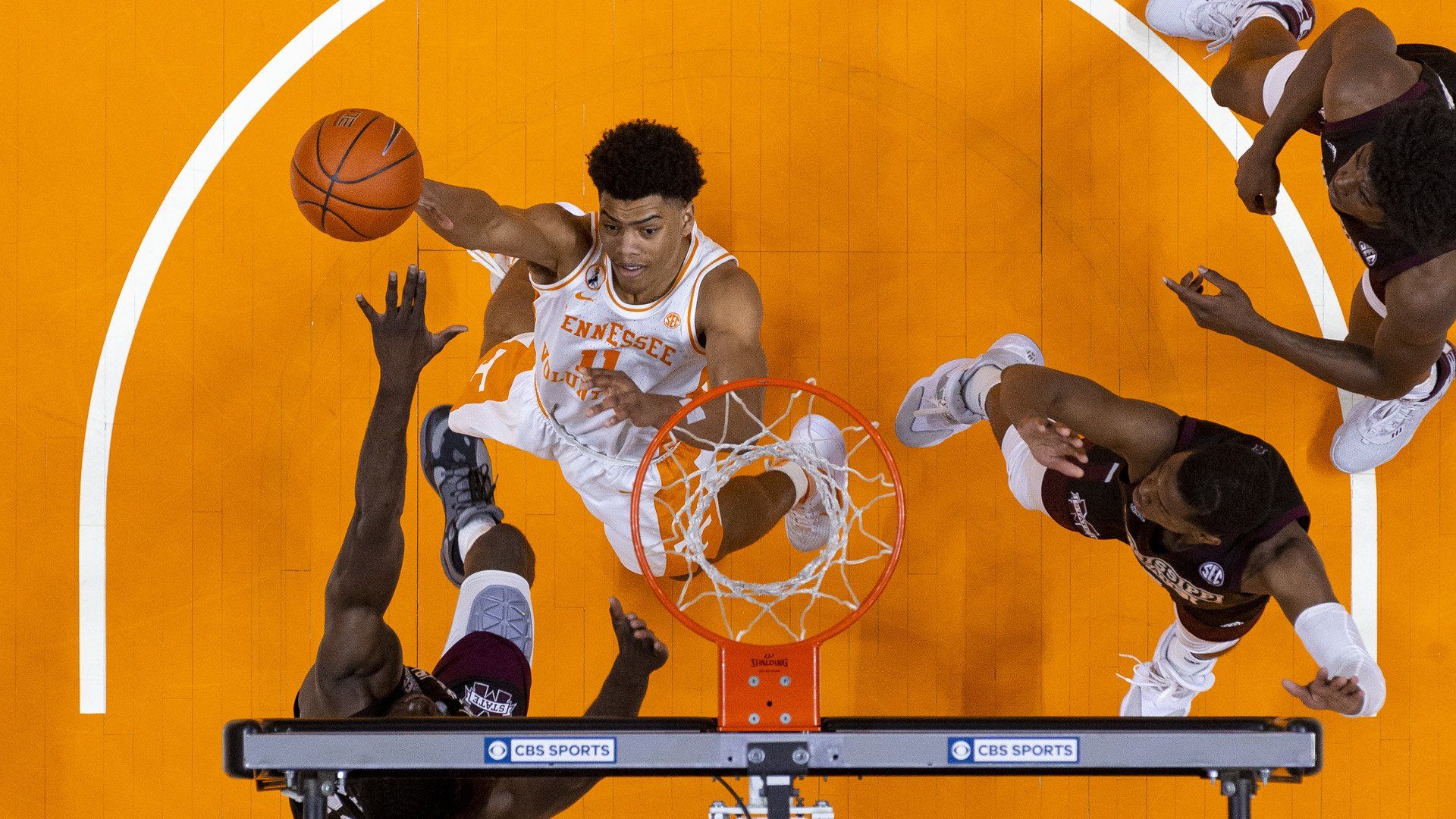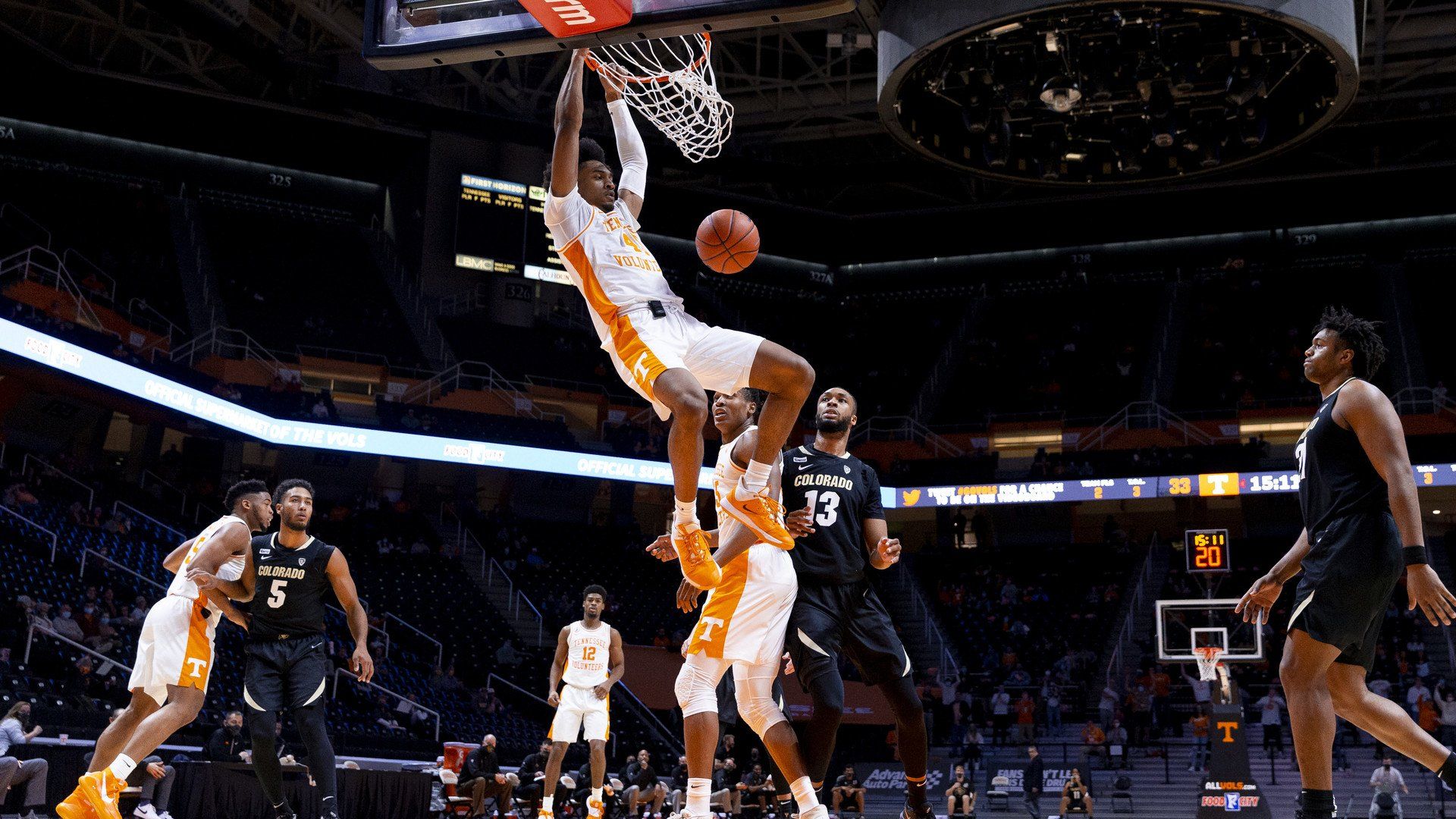2021 NBA Draft Profile: Brandon Boston Jr.
Brandon Boston: 6'7", 185 lbs. 19 years old

| PPG | REB | AST | FG% | 3P% | FT% | STL | BLK | TOV | PER | TS% | Total Offense | Total Defense |
|---|---|---|---|---|---|---|---|---|---|---|---|---|
| 11.5 | 4.5 | 1.6 | 35.5 | 30.0 | 78.5 | 1.3 | 0.2 | 1.4 | 13.2 | 44.7 | 39th Percentile | 39th Percentile |
If you play for John Calipari at the University of Kentucky, there will be massive expectations.
One of the most prestigious programs in college basketball history has welcomed in numerous top ranked freshman recruits over the years, especially since Calipari has set foot in Lexington.
Brandon Boston Jr. came in as one of those heralded players, decorated like many before him, having come from Sierra Canyon, which has grown as a power in the high school basketball landscape in its own right. Boston already knew what it was like to have the bright lights on him to some extent, with a number of known “stars” on that team with him, including Ziaire Williams and Bronny James.
But playing at Kentucky is a few rungs up on the ladder. The fan base, the coaching staff and the national media all fare better when the team is stacking wins, conference titles and deep NCAA Tournament runs.
That wasn’t the case this year.
Boston played on one of the youngest teams Cal has ever had to coach, with so many new bodies and faces having to come together without a typical offseason due to COVID-19 restrictions. And the struggles bore themselves out particularly early on in the season.
The team’s first game was a cupcake lob against Morehead State in which Kentucky came out and dominated from start to finish. Every player, including Boston, had a moment or two to show off something from their toolbox of skills.
Then Richmond happened. Kentucky’s contest against the Spiders was one of the most lopsided games I’ve ever witnessed in terms of the Wildcats being on the receiving end of a beatdown.
Boston’s shortcomings were plastered all over that game along with some of his fellow higher profile teammates such as Isaiah Jackson and Devin Askew. No one was ready to go up against a defense like Richmond’s, one that communicated and rotated so well. Not to mention the physicality broke Cal’s team down before halftime.
That was the story both for Kentucky and Boston for the majority of the 2020-21 collegiate season.
Boston came in as a consensus top 10 recruit nationally, and was even getting up as high as second overall in preseason mock drafts right behind Cade Cunningham.
And that wasn’t for nothing. Go back and watch some of BJ’s highlights both in high school and AAU. 6’7” guard who could fly up and down the court, and had every trick in the book offensively to get a bucket. Whether it was his handle or his foot work, Boston could make something happen on virtually anyone.
Scoring guards/wings at his size with the level of polish that he put on display for years don’t come around often, and considering the emphasis that’s been put on finding guys his size who can handle the ball to fit nicely on NBA rosters, it was clear that Boston was going to get a lot of attention and would have every chance to earn a top selection in the 2021 draft.
However the aggressiveness and speed of the college game overwhelmed Boston at times and threw him completely out of the beat that he marched to before the pressure was truly mounted on his shoulders.
The first few games of the season, Boston tried to beat his man off the dribble and get into the thick of the defense to set up everything else he does well, particularly his perimeter shot creation and separation off the dribble. Normally, that’s an excellent thought to have: make your man fear your first step and get him to react accordingly and focus on protecting the rim versus keeping an elbow in your grille at all times. Once that mental game is won, Boston can go to his handle easier and look for some of those pull-up jumpers that are plastered all over YouTube highlight packages.
Unfortunately, that was easier said than done.
It’s not that Boston can’t beat anyone off the bounce at the college level because he did. However, once he got past that first guy and the rest of the defense collapsed, Boston looked like a deer in headlights.
He’s listed at 185 lbs. and honestly, that might be generous. Boston is very slender in frame and the majority of scouts and evaluators knew coming in that he would struggle with finishing inside consistently over bigger and stronger matchups. If Boston continued his dribble drive toward the basket, it’s almost as if he knew he had to brace for impact because he was generally pushed off his spot which either led to a bad miss or a turnover before he even had the chance to get a shot up.
In turn, as he was continuously beat up on his drives to the basket, his confidence eroded and made him doubt the rest of his offensive game/package. Once defenses realized this, they played accordingly with success.
All of this led to inefficient shooting performances, lapses in ball movement and all of those worries bled into his defensive impact as well. It honestly seemed like his early season slump made him question who he was as a basketball player and how good he can be.
This is a relatable issue because I’m sure anyone reading this profile knows what it’s like to fail miserably one day and question where exactly you fit in. I personally never thought that would happen to Boston after watching tape from his time before he played in the SEC, but then again maybe I was wrong to make such an assumption.
The weaknesses that could keep Boston off an NBA floor were clear as day to anyone who flipped on a game from the first half of his season: poor body and strength composition for his size and position, lack of confidence going to the basket, slow processing the game at the college speed to read and react to opposing defenses.
Case closed, right? No. How a player responds to adversity/challenges and overcomes them during the year is something I love to monitor.
At least some of these things could’ve been handled much better with a proper offseason transition into college working with a better strength and conditioning program and getting more practice time with Calipari as well as his new teammates.
Why do I believe that? Because the proof is in the pudding.
If you take a look at some of Boston’s performances near the end of the year, particularly in what ended up being his last contest in the blue and white against South Carolina, it’s like watching a completely different player.
The zippiness up and down the floor in transition, quick decisions with the ball in his hands be it to dribble, pass or shoot…And the confidence on his jump shot to shoot with no hesitation, undeterred by closeouts, squaring to the hoop with ease and just letting it rip. He was trusting his natural ability again, and once he figured out how to play at the speed necessary in terms of processing what’s going on around him, you saw that trust in his skill base manifest inside the arc as well.
By the end of the year, gone were those meaningless drives into traffic always coughing up the ball or forcing up a contested look. The foot work stared to show through, he was making guys miss with steps going either direction and he found his stride playing angles that he hadn’t previously looked for at Kentucky. He was going to a floater off a dribble or two, or even coming to a jump stop to re-adjust and bank in a shot at a new angle. The skills that many deemed as special really came together for him, and Boston isn’t done improving on the offensive end. Not by a long shot.
Clearly his catch-and-shoot mechanics aren’t broken once he actually has the ball in his hands. He wastes no time bringing the ball up and going through his motion, release and follow through. His shot is about as clean as you’ll find in this draft class. The main pitfall was that he wasn’t always ready off the catch to go up. Boston did a much better job toward the end of the year of getting his body squared and set when he knew the ball was being swung around his way to catch it in the shooting pocket so he could rise and fire. That main adjustment spiked his efficiency from three particularly in his last few games, and while that couldn’t save some of his percentages for the year, the answers for Boston’s improvement and upside are found on tape, not necessarily just by the numbers.
Unlocking the rest of his pull-up arsenal will come with continued recognition of how his defender is angling himself once Boston gets the ball, being confident with his first step once he’s figured out which direction he needs to go, and then leaning into his ability to change speeds or come to a jump stop effectively to rise up. His handle is there, could he tighten it up a bit? Absolutely, but so could a lot of prospects coming into the draft. But I think as a collective we may have undersold just how quick Boston is getting to a spot in the half court. He moves with grace the way few other prospects do, and when you combine that short burst quickness with his footwork, he can create separation on defenders for better mid-range looks. A lot of his upside will tap more into how he sees the game playing out mentally and then reacting in short order.
Beyond that, he’s not going to consistently finish at the basket in traffic. But recognizing when he has a driving lane, not hesitating on that opportunity and then leaning into his change in direction and touch when he gets there will all be crucial in terms of giving him a chance to get the bucket at the next level. Boston likely won’t ever be a more physical wing and that’s ok. He has so many other gifts elsewhere to mitigate those concerns and tap into the immense talent base he already has.
Defensively, the size concerns rear their ugly head here too but they don’t have to dominate his impact or lack there of on that end of the floor.
A big part of defense is effort combined with awareness. Boston has the quickness as mentioned above to beat guys to their spots. Playing within team concepts and studying the game to learn how to approach certain situations and figure out where the ball and/or man are going before they get to that spot will help him immensely. He has the length to close out and contest looks (and actually fared fairly well in those metrics per Synergy Sports in comparison to some of the other defensive numbers), so figuring out how he can effectively beat people there instead of crashing the party late and giving up a stupid foul or clean drive to the basket will be key to maintaining at least an average stance on defense.
One play in particular that comes to mind is in that last game against South Carolina, in which Boston read the pass perfectly like a defensive back in football, swooped in for the steal to get out on the break forcing the Gamecocks to foul and prevent an easy deuce. Again, that didn’t just happen because of his ability to get to a spot and make a play. That steal happened because he RECOGNIZED where the ball was going and reacted before the offense could re-adjust or send the ball a different direction. It absolutely takes time to make those kinds of reads with regularity, but if Boston commits to improving defensively and embracing what makes him special versus what he might not have, then I think an NBA club might be happily surprised with how he turns out on that end in a few years’ time.
How does Boston stay on an NBA floor and live up to as much of his lofty praise as possible? Dialing in his shot selection, and mechanics in different shooting situations. Defensively, always giving effort, furthering his preparation on that side of the ball so that he prevents unfavorable one-on-one physical battles. These are all things I envision Boston doing to earn his spot in the league.
That player may not be a top five pick as initially thought, but could be a pretty useful weapon to have in a rotation in time.
If a team is willing to be patient with him, let him work in the weight room and build his confidence back up, he could absolutely be a steal in this draft class.



